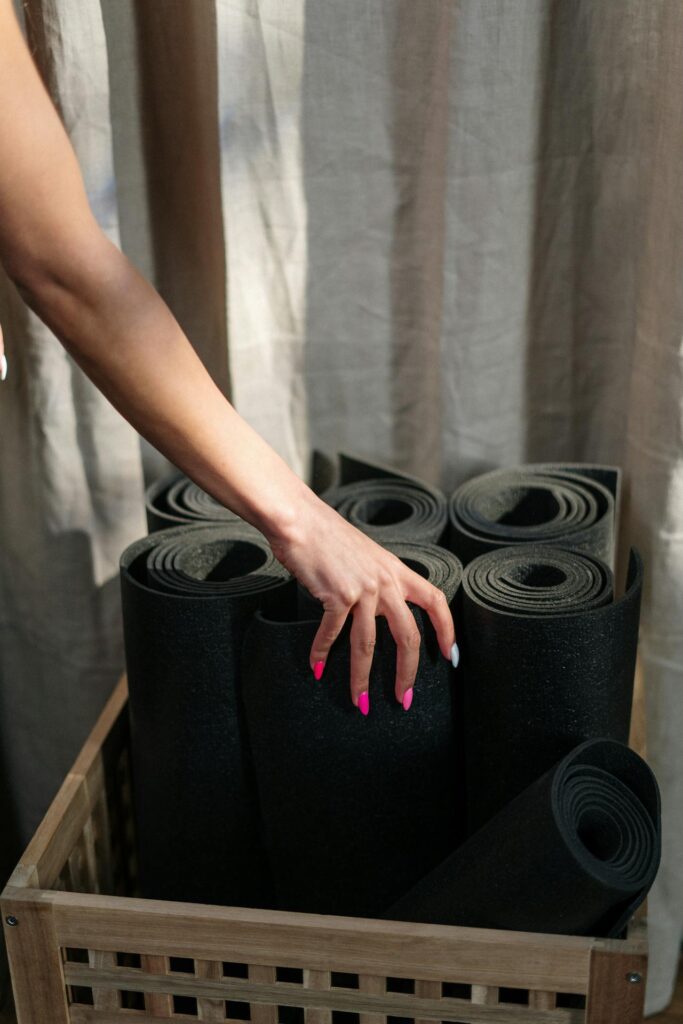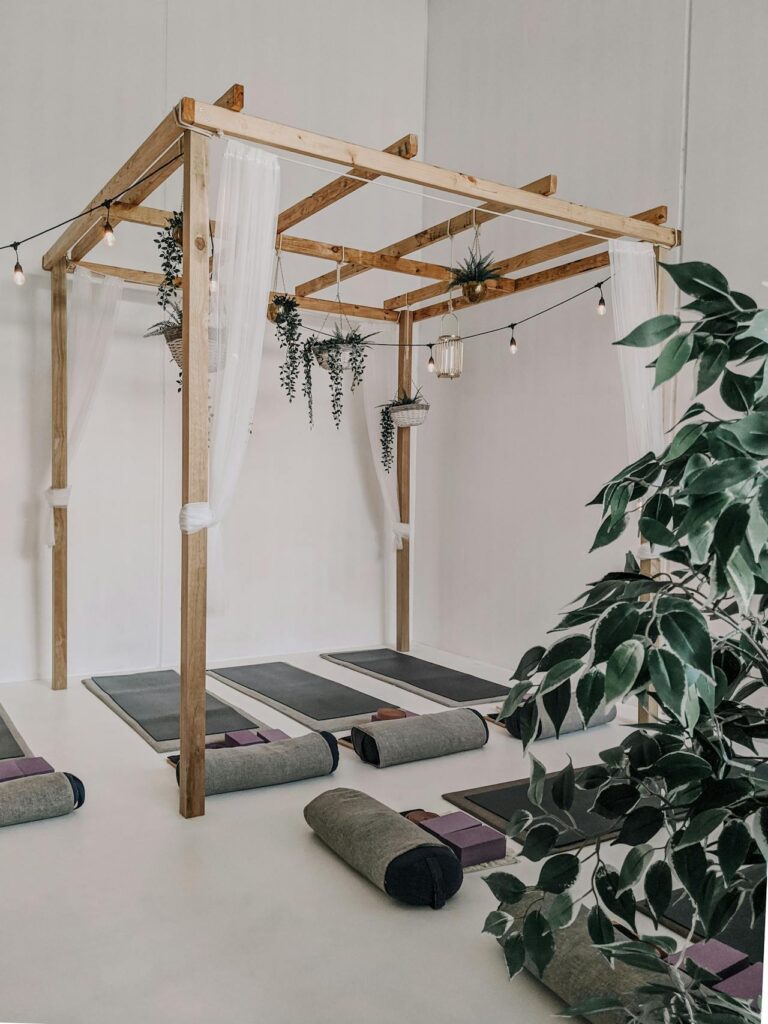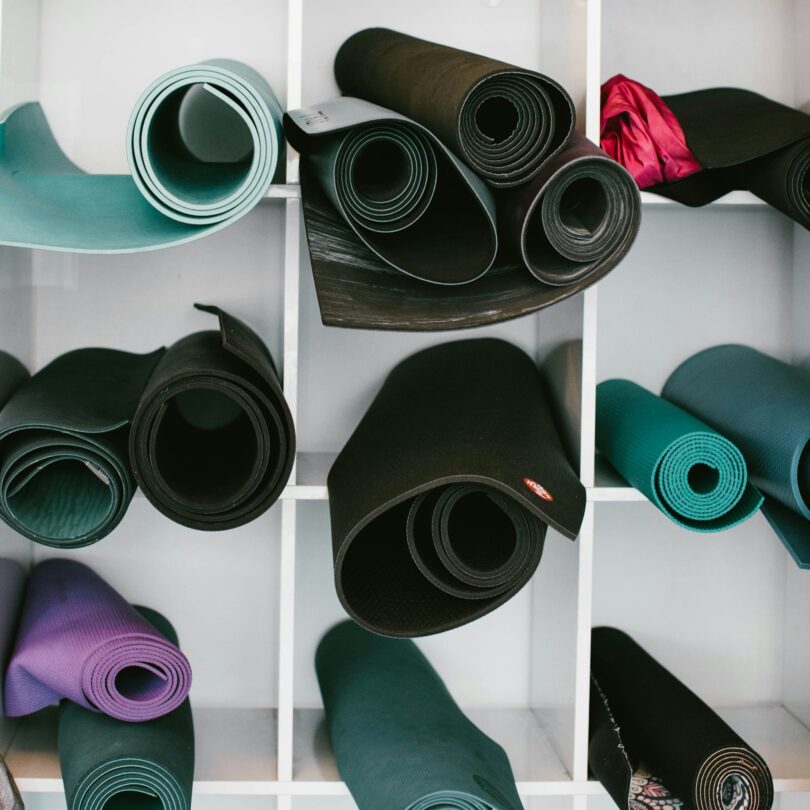Table of Contents
Introduction
Yoga, an ancient practice known for harmonizing the body, mind, and spirit, has seen a remarkable surge in popularity worldwide. As beginners and seasoned practitioners seek to deepen their practice, owning the right yoga mat cannot be overstated. Not just a simple accessory, a yoga mat is a companion on your journey to wellness, offering comfort, stability, and a personal space for reflection and growth.
Why the Right Yoga Mat Matters
Comfort
The primary role of a yoga mat is to provide a comfortable surface that cushions your body against the hard floor. A good mat ensures that you can hold poses longer and transition smoothly without discomfort.
Stability
A mat’s grip on the floor and your feet’s grip on the mat are crucial for maintaining pose balance and alignment. This stability is essential in dynamic practices or poses that require a strong foundation.
Durability
Investing in a durable yoga mat means you’ll have a reliable practice surface for years. High-quality materials can withstand regular use and the wear and tear of various yoga styles.

Types of Yoga Mats
PVC Mats
Polyvinyl chloride (PVC) mats are famous for their durability and stickiness, making them suitable for high-intensity styles like Ashtanga or Vinyasa.
Rubber Mats
Natural rubber mats offer excellent grip and eco-friendliness, which is why they are preferred by those seeking a more natural practice surface.
Cotton and Jute Mats
These natural fibers provide a sustainable option, with cotton offering softness and jute, adding durability and texture for grip.
Key Features to Consider
Thickness
The thickness of your yoga mat affects comfort and portability. While thicker mats provide more cushioning, they can be heavier and less stable for balance poses.
Texture
A mat’s texture influences its grip and feel. Some practitioners prefer a smoother surface, while others opt for more texture for additional slip resistance.
Eco-Friendliness
With growing environmental concerns, many yogis choose mats made from sustainable materials, like natural rubber, cotton, or jute, free from harmful chemicals.

How to Care for Your Yoga Mat
Cleaning
Regular cleaning keeps your mat hygienic and extends its life. Simple soap and water can do the trick, or you can use specially formulated yoga mat cleaners.
Storage
Proper storage is critical to maintaining your mat’s shape and longevity. Roll it up loosely and store it in a cool, dry place away from direct sunlight.
Top Picks for 2024
As we look ahead, the best yoga mats of 2024 will balance comfort, grip, and eco-friendliness, catering to the diverse needs of the yoga community.
Conclusion
Choosing the right yoga mat is a personal decision that significantly impacts your yoga practice. Considering the factors discussed, you can select a mat that supports your physical needs, aligns with your values, and enhances your journey toward inner peace and physical fitness.
Related Article: Transform Your Workout: Top 5 Yoga Poses for Men
FAQs
What’s the best thickness for a yoga mat?
The ideal thickness depends on your personal preference for comfort versus stability. A standard thickness is about 1/8 inch, but thicker mats (up to 1/4 inch) may be more comfortable for those needing extra cushioning.
Can I use a PVC mat if I’m allergic to latex?
Yes, PVC mats are generally latex-free and can be a good option for those with latex allergies.
How often should I replace my yoga mat?
This depends on the frequency and intensity of your practice and the mat’s material. With regular use, a yoga mat can last between 6 months and a year.
Are expensive yoga mats worth the investment?
Higher-priced mats often offer better durability, materials, and features. If you practice regularly, investing in a high-quality mat can enhance your practice and be more cost-effective in the long run.
How can I make my yoga mat less slippery?
Washing your mat to remove factory residues and practicing regularly can help break it in and reduce slipperiness. Some mats also come with a texture that improves grip over time.







